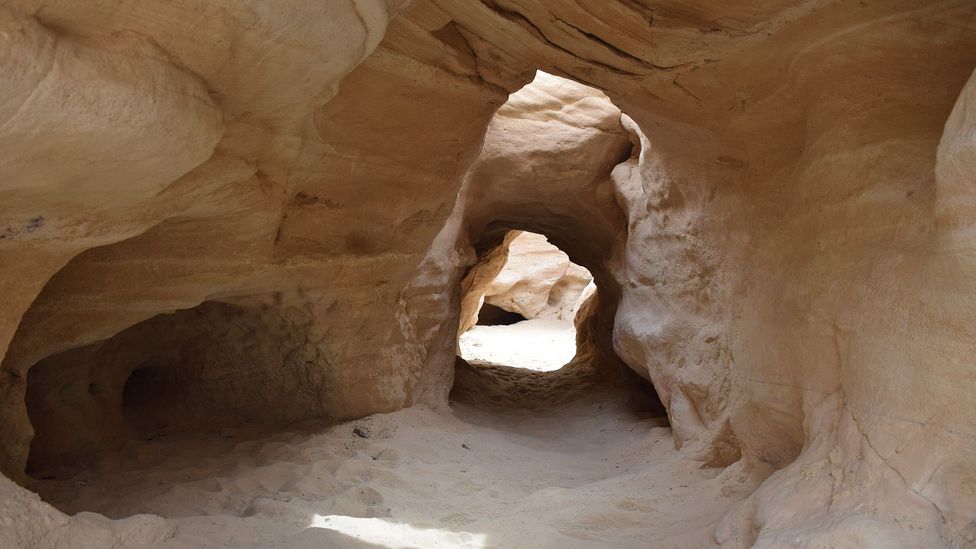Ach, people have been saying that since the copper age.
From Undark, October 20:
As mining companies delve ever deeper into the Earth, new tools — from AI to metal-eating microbes — will guide the way.
In the decades to come, as the easiest-to-mine metal deposits are tapped out, the quest for metals to supply the clean energy transition will force us ever further afield. To more remote and politically unstable places on land and further underground, to the deepest seabed, and perhaps even beyond the limits of the Earth altogether — to the moon, and near-Earth asteroids and comets. And unless business as usual can change, our future over the shorter term will be to venture into ever deeper, darker, and riskier places, creating new sacrifice zones in the Global South, where most of the best earthly deposits remain.
Where it is technically possible, we will go ever deeper into the Earth’s crust to access metal-rich ores. Many of the biggest open-pit mines of the world — Chuquicamata in northern Chile, Bingham Canyon in Utah, and Grasberg in western New Guinea — have gone as deep as they can safely go. Beyond one kilometer of depth (0.6 miles), the slopes of an open pit can become increasingly unstable; to tap the deep roots of metal deposits, miners now plumb the depths underground.
No other mining operation on Earth yet compares to South Africa’s Mponeng gold mine, the world’s deepest, about 40 miles southwest of Johannesburg. Mining to a depth of almost 2.5 miles — the equivalent of nearly 10 Empire State Buildings stacked end to end — thousands of workers navigate 236 miles of subterranean tunnels, in an operation that consumes more annual energy than New Orleans.
Deep-crust mining forces engineers to confront a long list of potentially catastrophic events and phenomena — high temperatures, rock bursts, gas outbursts, and a multitude of other hazards that result from blasting and removing rock at great depth. “A deep mine is a truce that will always break,” writes Matthew Hart, author of “Gold: The Race for the World’s Most Seductive Metal,” of his own visit to Mponeng. By the time he had traveled by elevator 2.3 miles below the surface, the rock was 140 degrees Fahrenheit to the touch, with humidity at a soupy 95 percent.
South Africa’s biggest gold mining company, Harmony Gold, operates here in an environment where almost nothing can survive on its own, with one strange exception. Scientists gathered DNA from water collected at Mponeng in fractures 1.7 miles deep and found that a single bacterium accounted for 99.9 percent of the microorganisms present. Candidatus Desulforudis audaxviator is known as an “extremophile”: an organism that can survive under seemingly impossible conditions — permanent darkness and extreme heat, for example — living an independent lifestyle by making everything it needs itself.
To make the same depths survivable for humans at the time of Hart’s visit, the company was manufacturing 6,000 tons of ice a day on the surface, mixing it with salt to create an icy slush, and piping it through the mine, using fans to circulate the cooling air. Every day almost 6,500 tons of rock is blasted and removed from this underground labyrinth comparable to New York City’s subway system: The trouble with that, writes Hart, is that “the laws of compressive force dictate that the rock will try to close the spaces” created by all that mining.
At least 600 times a month, he writes, a seismic event shudders through the mine: “Sometimes the quakes cause rock bursts, when rock explodes into a mining cavity and mows men down with a deadly spray of jagged rock. Sometimes a tremor causes a ‘fall of ground’— the term for a collapse. Some of the rock bursts had been so powerful that other countries detecting the seismic signature had suspected South Africa of testing a nuclear bomb.”
A plan to extend the mine further beneath the Earth’s surface was abandoned by the mine’s previous owner; by August 2023, the mine’s current owner had announced a new expansion, including renewed plans to extend the depth of the mine.
Under the best of circumstances, there are hard limits on how low we can go: The Earth’s crust extends downward as deep as 30 miles beneath land and 6 miles under the seabed. A 1972 exploratory hole dug by oil drillers in Oklahoma went nearly 6 miles deep, encountering pressure nearly 2,000 times greater than the atmospheric pressure on the surface; work stopped when a 475-degree-Fahrenheit molten sulfur deposit destroyed the drill bit.
The record for depth goes to the Kola Superdeep Borehole, a Soviet-era scientific experiment that drilled 7.6 miles into the Kola Peninsula in the Russian Arctic. A number of factors made the drilling stop: lack of funds amid a crumbling Soviet empire, much higher temperatures than expected (over 350 degrees Fahrenheit), and a surprising decrease in the density of the Earth, which combined with the heat made the rock behave more like plastic, making drilling virtually impossible.
The Resolution project in Arizona, a massive proposed underground mine that could one day supply 25 percent of U.S. copper demand, has Rio Tinto and partner BHP planning to spend up to $8 billion to mine at depths of more than 1.2 miles, where the temperatures rise to over 175 degrees Fahrenheit....
....MUCH MORE
Okay, they weren't saying that!
The 4000 - 6000 year old underground workings in what's now Israel are maybe ten to thirty feet underground:

Chalcolithic copper mine in Timna Valley Photo Credit
and in some places so close to the surface that the roof has collapsed and the sunshine pours in:

The oldest copper mines in Timna National Park date back to 4500BC (Credit: Sara Toth Stub)
—BBC